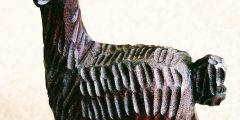Artificial intelligence and existential risk: From alarm to alignment
June 15, 2023
1956 was a momentous year: I and AI were born. Ok, I was born and artificial intelligence was defined as a field of research in computer science. A lot has happened since, especially over the last two decades; and now speculation is rife as to whether AI might lead to the extinction of humanity. By …
Mitochondrial replacement and the pangenome
May 17, 2023
Recently two events caught my attention, which should at least be noted on this blog: the publication of the first human pangenome on 10 May 2023 and the birth of babies through a new human fertilisation technique variously known as mitochondrial donation, mitochondrial transfer, mitochondrial transplant or mitochondrial replacement on 12 May. I’ll say a …
The Gmelin family: From chemistry to phlogiston and permafrost
May 12, 2023
I had Covid. I was lying in bed. I saw a tweet by Mark Carnal saying: “Historians of Biology. How on earth is Gmelin pronounced? I’ve not had to say it out loud before.” I am not a historian of biology but, as a German speaker, I was intrigued. So, I looked up the name …
Bridge or Barrier – Does generative AI contribute to more culturally inclusive higher education and research?
May 8, 2023
This post by Dr Dimitrinka Atanasova was initially posted on the LSE Impact Blog on 4 May, 2023. It is cross-posted here with permission. Dr Dimitrinka Atanasova is a Lecturer in Intercultural Communication at Lancaster University. Her research focuses on health & science communication (particularly the topics of obesity, mental health, climate change, sustainability, nitrogen …
LLaMas, Alpacas and Dolly 2.0: Exploring an emerging AI menagerie
April 21, 2023
There was a time when llamas were llamas and small furry creatures from Alpha Centauri were small furry creatures from Alpha Centauri. Now we have LLaMas, Alpacas and AI programmes that impersonate cloned sheep. I’ll first say something about ChatGPT, the AI chatbot that launched a hundred fury creatures, then something about another chatbot that …
Human genome editing summit, London, 2023
March 10, 2023
Ceci n’est pas un blog post. As I have no time to write anything proper for a few weeks, these are just some notes and pointers. This non-post is ‘about’ the Third International Summit on Human Genome Editing which took place at The Francis Crick Institute in London from 6 to 8 March. I couldn’t …









